時序市場
Chrono Market
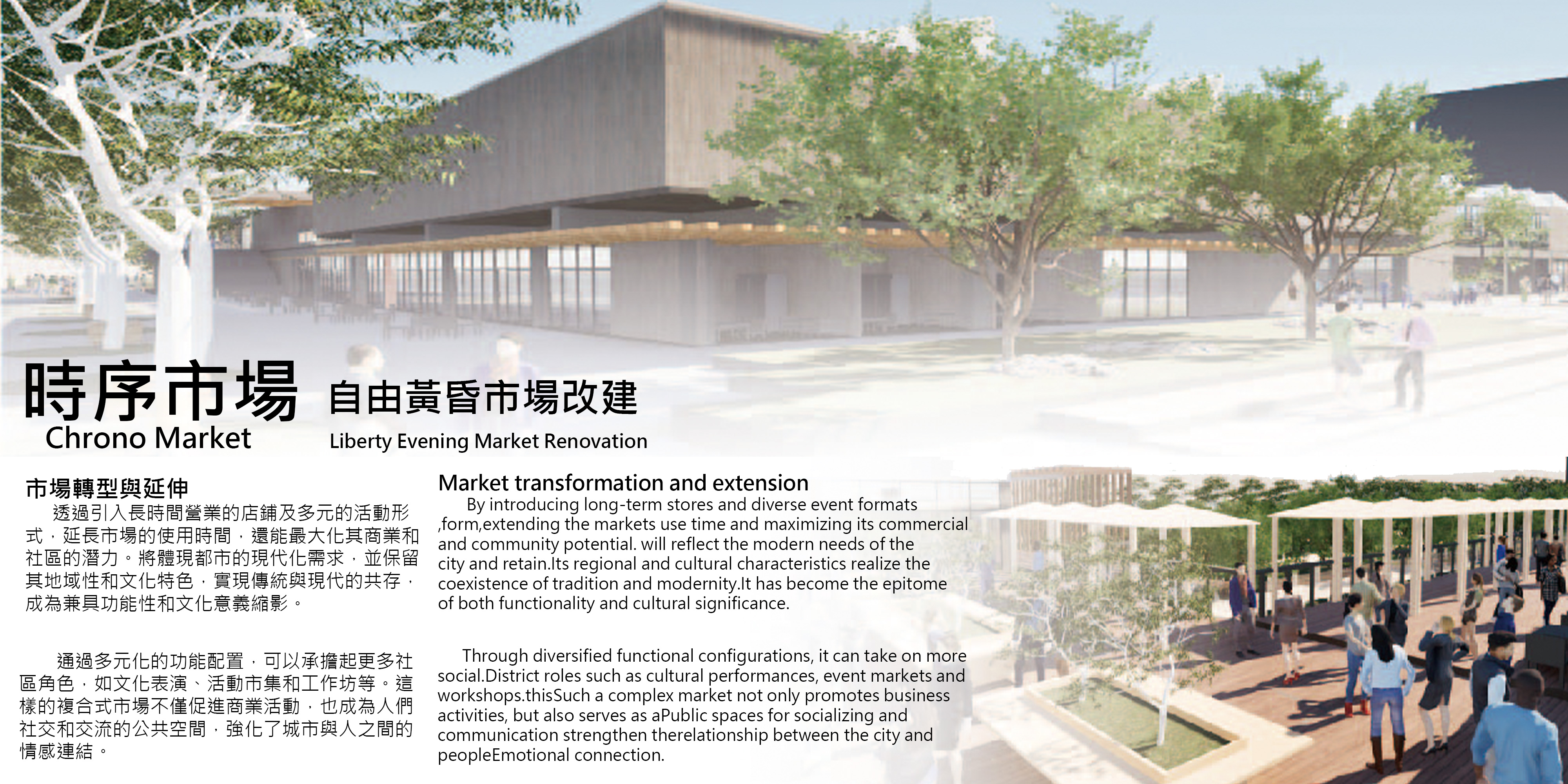
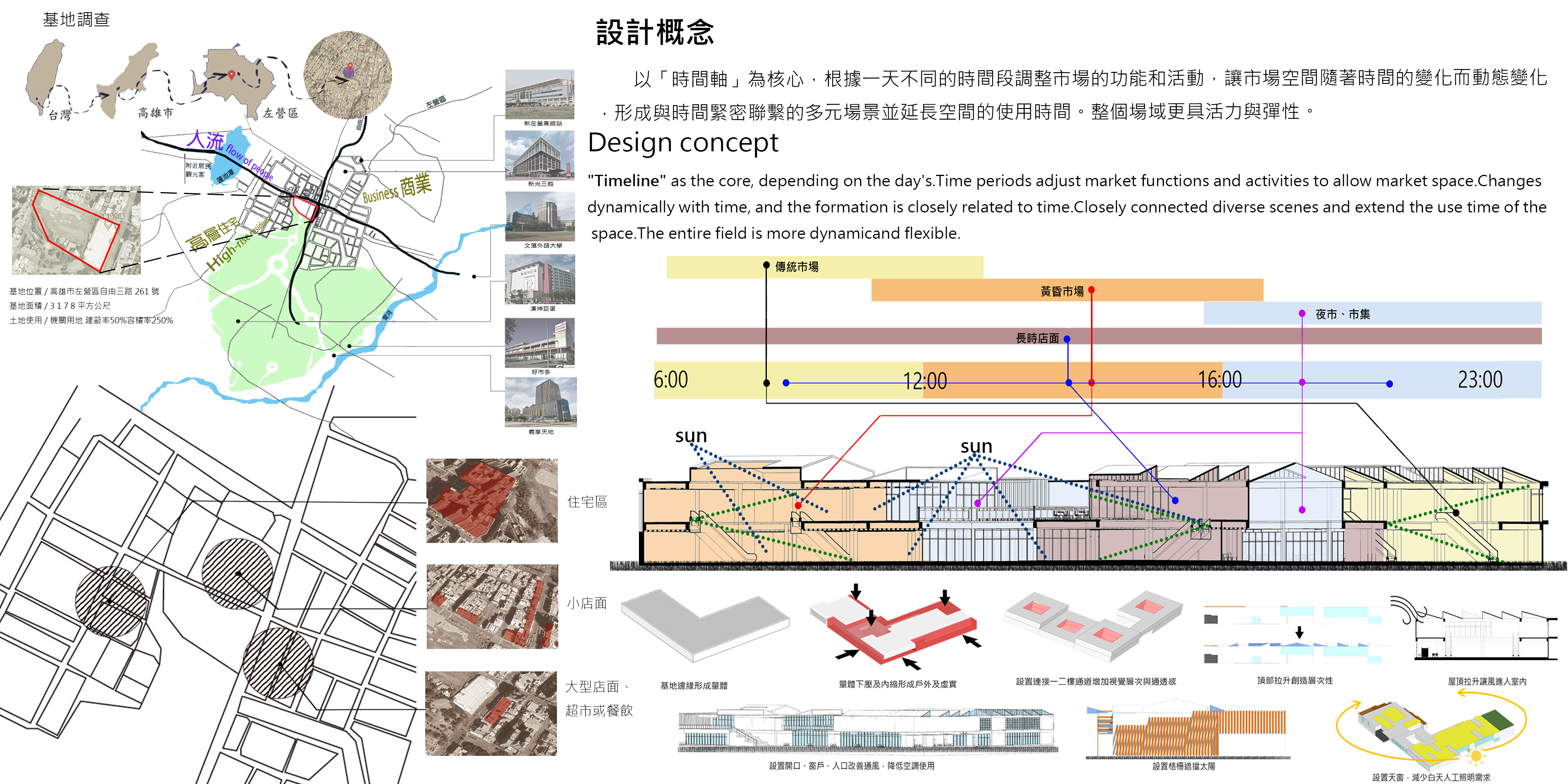
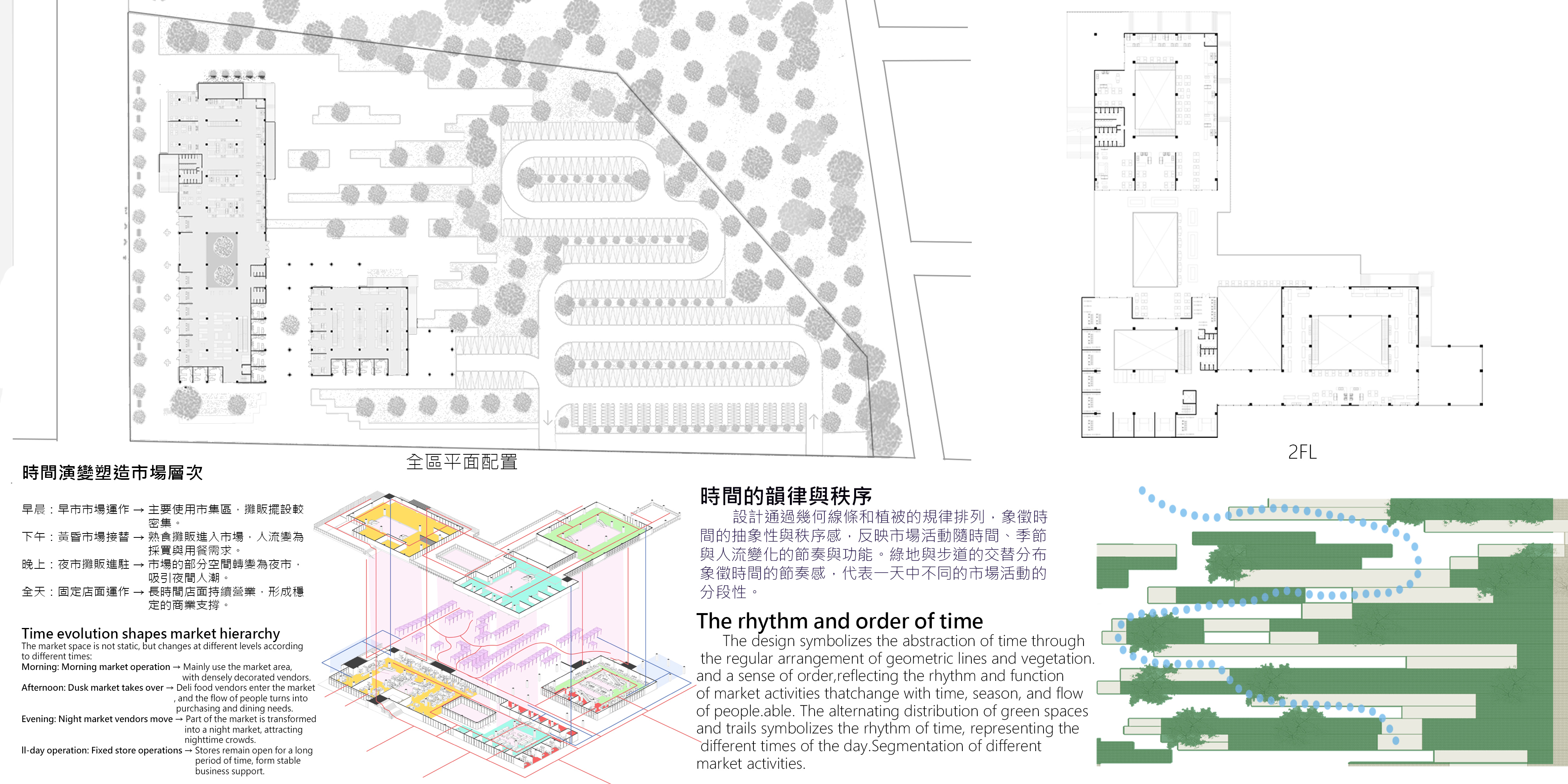
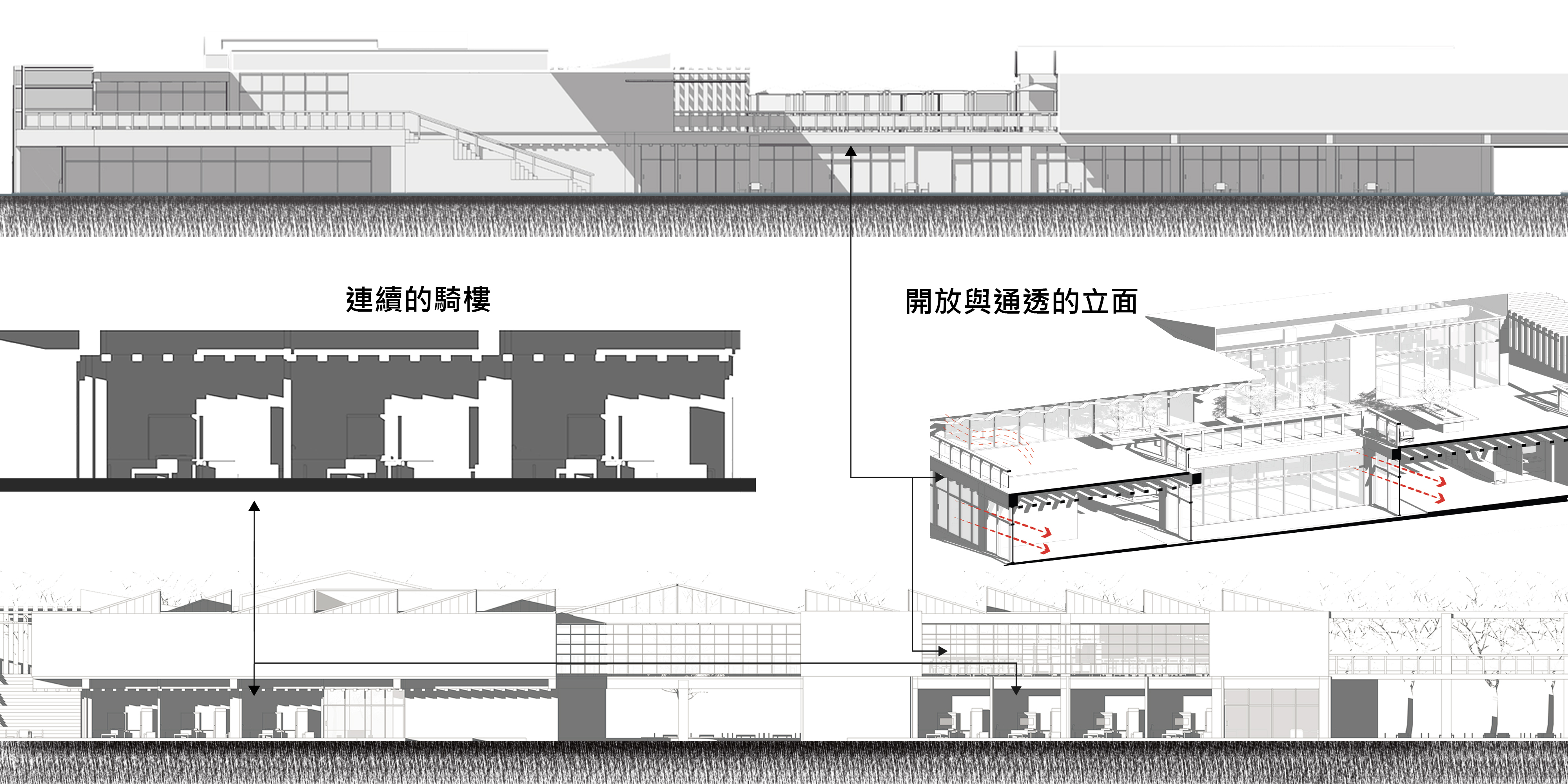
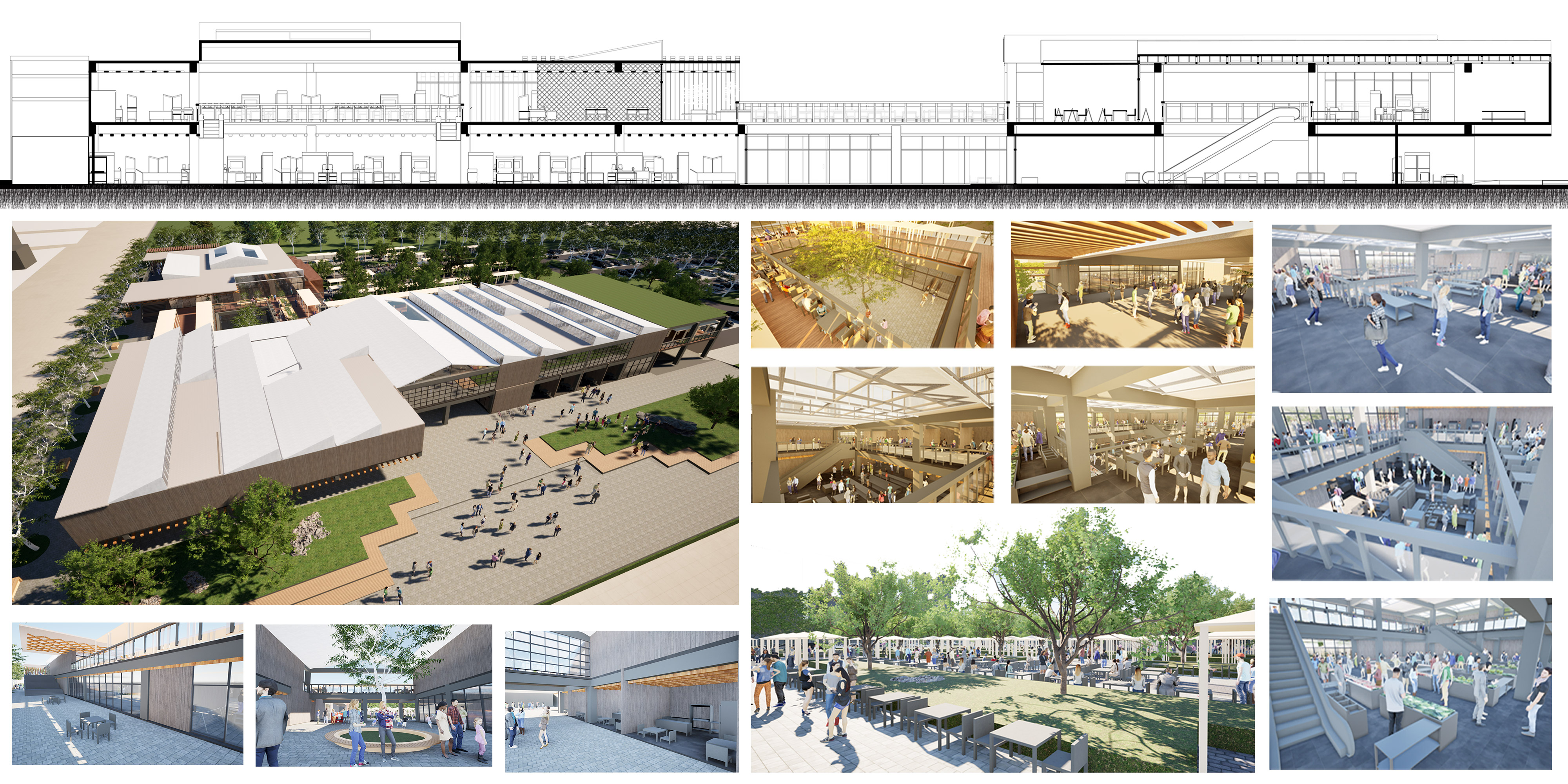
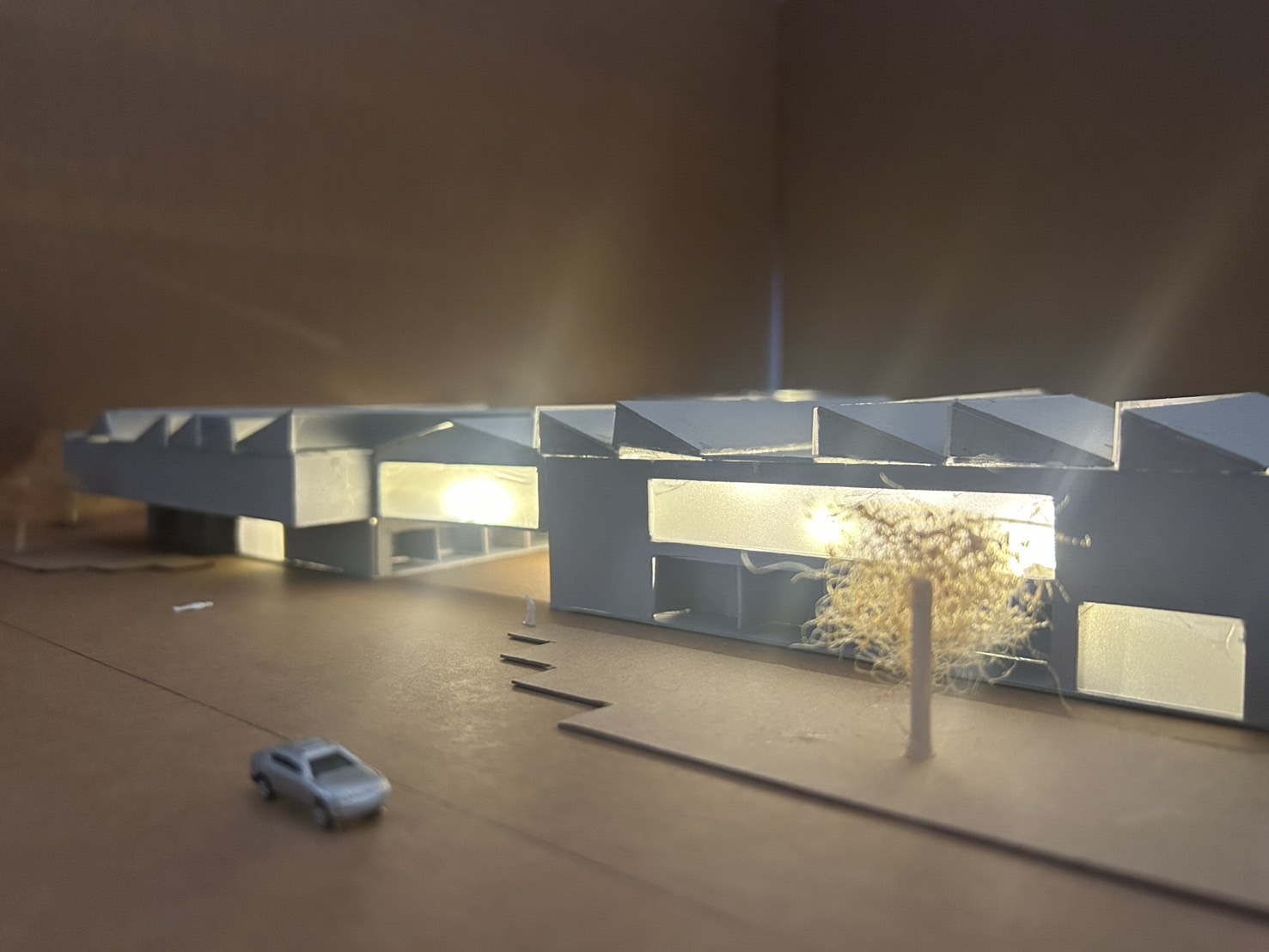
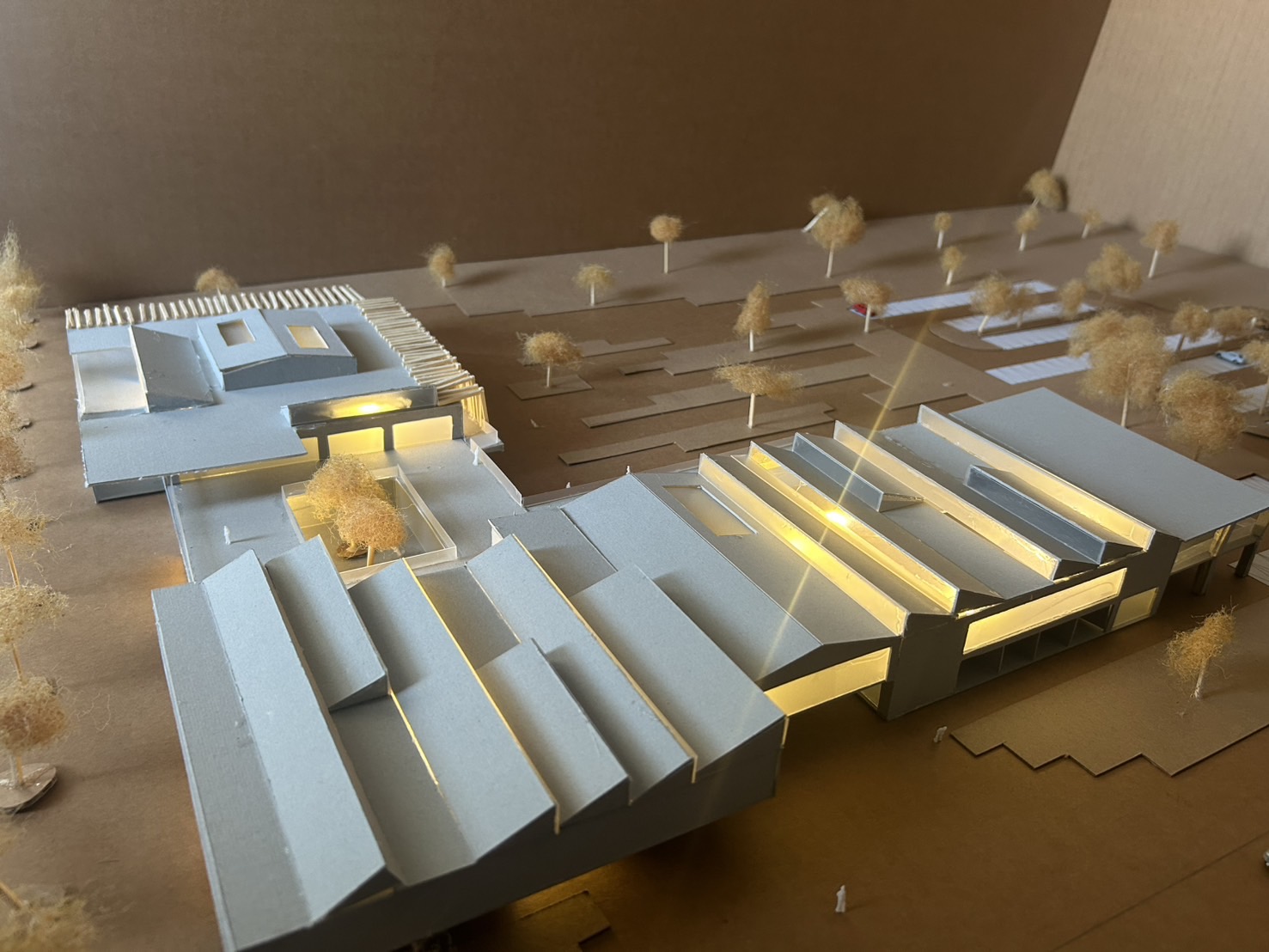
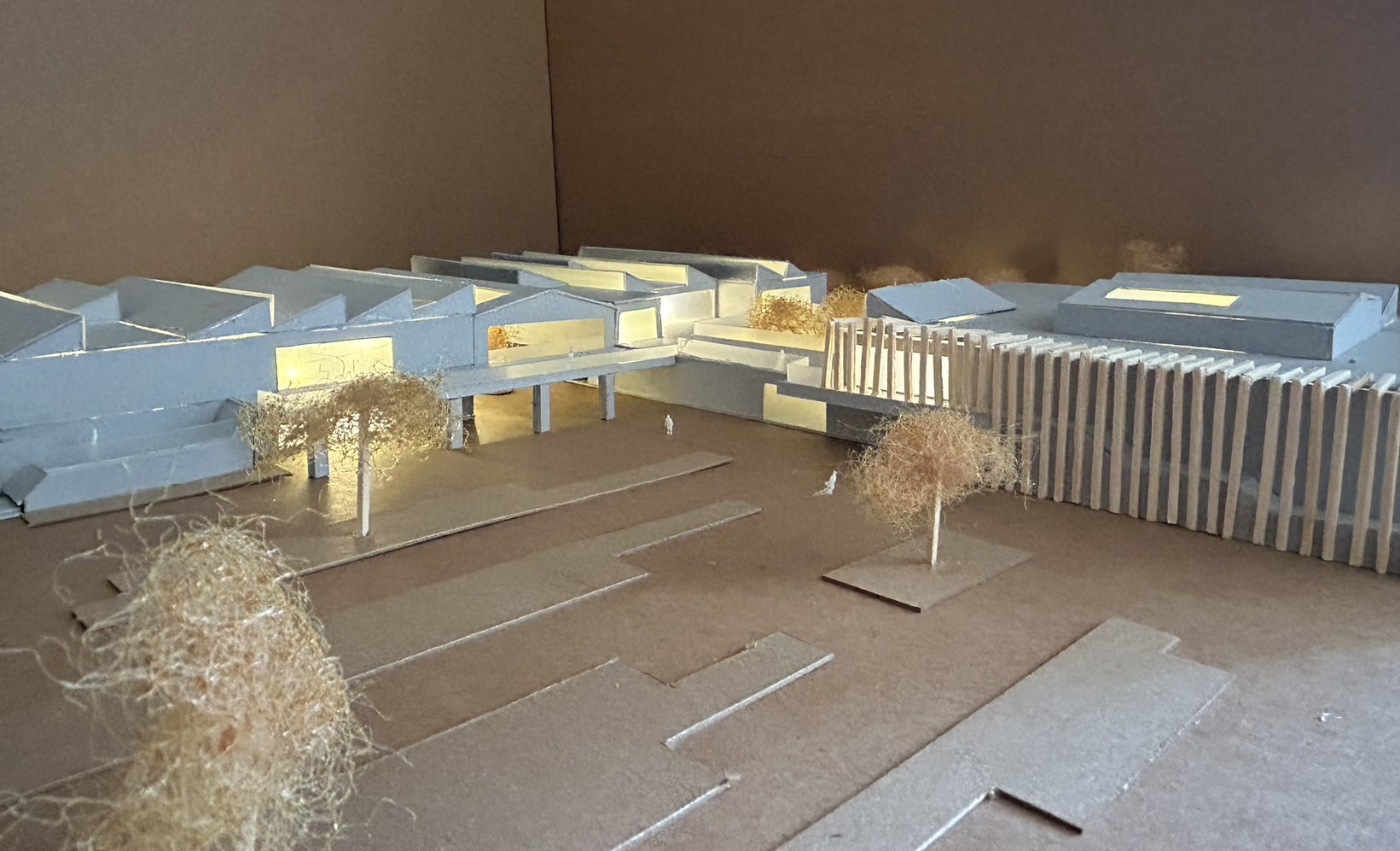
本設計以「市場作為城市公共空間的中心」為核心理念,透過「時間軸變化」的設計手法,打造一座隨時間轉換、靈活適應不同需求的市場。
市場空間設計以L型建築圍塑出開放式廣場,並設置連通二樓的坡道與階梯,形成流動且開放的空間體驗。透過模組化攤位設計,實現「早市、黃昏市集、夜市」三階段的空間轉換。早晨提供新鮮農產品,下午呈現特色美食與手作市集,夜晚則轉為熱鬧的夜市,創造多元且豐富的市場體驗。
此外,建築採用綠色設計策略,透過自然採光與通風機制,提升環境舒適度,同時結合綠意廣場,為市民提供休憩與社交空間。市場內部規劃包含長期經營店鋪與短期攤販區,讓空間具備彈性與靈活性,能夠因應不同時段與活動需求,自由轉換市場功能。
透過動態空間設計,市場不僅是商品交易的場域,更成為城市中促進社群互動與文化交流的核心。無論是清晨的採買、黃昏的市集體驗,還是夜晚的熱鬧夜市,市場皆能充分展現城市生活的多樣性與活力。
此設計期望透過時間軸的變化,讓市場成為一個具有文化傳承與創新價值的都市公共空間,連結居民情感並活絡地方經濟。
Chrono Market
This design centers on the concept of “the market as the core of urban public space,” utilizing the technique of “time axis change” to create a market that adapts and evolves over time, responding flexibly to different needs.
The design features an L-shaped building that surrounds an open plaza, with ramps and stairs providing access to the second floor. This design aims to create a fluid, open experience for users. By incorporating modular stall designs, the market undergoes a three-stage transformation: the “morning market, evening market, and night market.” In the morning, fresh agricultural products are offered; in the afternoon, special foods and handmade items are available; and at night, the market transitions into a vibrant, lively night market, providing a dynamic and diverse market experience.
The building design also incorporates green strategies to improve environmental comfort, utilizing natural lighting and ventilation mechanisms. Additionally, the integration of green plazas provides citizens with spaces for rest and social interaction. Internally, the market layout includes both long-term shops and short-term vendor areas, ensuring flexibility in the space that allows it to transform according to time of day and the specific activities taking place.
The market is designed to go beyond its role as a place for trading goods—it becomes a key space for promoting social interaction and cultural exchange within the city. Whether it’s early morning shopping, the vibrant atmosphere of the afternoon market, or the lively night market, the market reflects the diversity and vitality of urban life.Through dynamic spatial planning, this design seeks to transform the market into an urban public space that combines cultural heritage with innovative value. The flexibility of the market space allows it to evolve and adapt to meet the demands of the community at different times, while creating emotional connections between residents and helping to invigorate the local economy.
This design concept aims to foster a deep sense of community while showcasing the diverse cultural aspects of the city. By blending functionality, aesthetics, and sustainability, the market becomes more than just a commercial space—it becomes a living part of the urban landscape that enriches the city’s social fabric. Through its adaptability and innovative use of space, the market will serve as a vibrant, evolving heart of the community, fulfilling both practical and cultural needs ..
正修科技大學 建築與室內設計系
(五年級)
郭品君
正修科技大學 建築與室內設計系
(五年級)
盧俐妤
正修科技大學 建築與室內設計系
(五年級) 指導老師 歐倉成